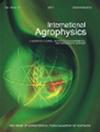开发一种机器视觉系统,用于确定非常不规则的小型生物材料的一些物理特性
IF 1.7
4区 农林科学
Q2 AGRONOMY
引用次数: 1
摘要
nique用于非常不规则的小型生物材料(小麦和水稻颗粒)的体积估计。研究了两种常见的圆柱形小型生物材料,Alvand品种的小麦和Neda品种的水稻。所捕获的图像被导出以由图像处理软件(ImageJ)进行处理,并且边缘提取的图像在SolidWorks中用于模型的3D重建。SolidWork中的旋转图像用于估计被检查晶粒的体积。然后将估计的体积与传统的数学表达式以及使用流体置换法的实际体积测量值进行比较。与数学误差(14.7%)相比,使用机器视觉和图像处理技术进行体积估计的平均误差(9.5%)要低得多。在含水量为11.83%的情况下,Alvand小麦的圆柱度平均值等于82.34%。与圆柱形作物的球形因子(小麦为61.5%,水稻为59.6%)。新的圆柱度因子可用于圆柱作物的传热传质建模。K e y w o r d s:机器视觉、物理特性、体积、图像处理、ImageJ、球形引言由于某些设备的未优化设计,在处理和加工高质量食品和生物材料时会出现巨大的采后损失(Narendra等人,2010)。谷物是伊朗食品消费中最突出的营养材料之一。每个伊朗人50%以上的营养物质由不同种类的面包提供(Mirasi等人,2014)。因此,了解谷物的物理特性对于制造用于处理、清洁、输送、储存和研磨的优化设备是必要的(Unal,2009;Kalantari,2016;Kalantri和Eshtawad,2013)。生物材料通过水或空气移动以及从中分离异物需要了解农产品的空气动力学特性。密度、形状和阻力系数是计算流体中物体的终端速度所需的物理特性。在空气输送或气动分离中,空气速度大于物体的终端速度。此外,为了使颗粒等小型生物材料缓慢下降,空气速度必须略低于终端速度。©2022波兰科学院农业物理研究所D.KALANTARI等人28因此,生物材料的形状,即球形或圆柱形,在通过筒仓和谷物钻机的卸料门的谷物流动中发挥着非常重要的作用,以及确定运动过程中颗粒周围的气流,这反过来又允许确定阻力系数(Chen等人,2020;卡兰塔利,2016;Dziki和Laskowski,2005)。对于大多数谷物来说,体积孔隙率在35%到55%之间;因此,颗粒物质的多孔性提供了一种可能性,即在吹塑和干燥过程中,几乎所有的颗粒都与空气接触(Navarro和Noyes,2002)。农作物和材料的另一个重要物理性质是体积,这是这些生物材料传质和传热的一个重要参数。已经提出了几种数学表达式来计算和估计不规则材料的体积(例如,Kheiralipour等人,2008;Unal 2009;El Fawal等人,2009)。例如,生物材料,例如谷物,在微波场中的温升等于等式(1)(Jafari等人,2018):本文章由计算机程序翻译,如有差异,请以英文原文为准。
Development of a machine vision system for the determination of some of the physical properties of very irregular small biomaterials
nique is presented for the volume estimation of very irregular small biomaterials (wheat and rice-paddy grains). Two common cylindrical small biomaterials, the Alvand variety of wheat grain and the Neda variety of paddy grain were considered for examination. The captured images were exported to be processed by an image processing software (ImageJ) and the edge-extracted image was used in SolidWorks for the 3D reconstruction of the model. The revolved images in the SolidWork were used to estimate the volume of the examined grains. The estimated volume was then compared with the conventional mathematical expression and also with the real volume measurement using the fluid displacement method. Volume estimation using machine vision and image processing techniques has a considerably lower mean error (9.5%) in comparison to the mathematical error (14.7%). The average value of cylindricity for Alvand wheat was found to be equal to 82.34% at a moisture content of 11.83%. The new cylindricity factor had a significantly smaller standard deviation in comparison to the standard deviation of the sphericity factor for the examined cylindrical crops (61.5% for the wheat grains and 59.6% for the paddy grains). The new cylindricity factor can be used for the heat and mass transfer modelling of cylindrical crops. K e y w o r d s: machine vision, physical properties, volume, image processing, ImageJ, sphericity INTRODUCTION Huge postharvest losses occur in the handling and processing of high-quality food products and biomaterials due to the non-optimized design of certain equipment (Narendra et al., 2010). Cereals are one of the most prominent nutrition materials in Iranian food consumption. More than 50 percent of the nutrition material for each Iranian is provided by different kinds of breads (Mirasi et al., 2014). Therefore, a knowledge of the physical properties of the cereals is necessary for manufacturing optimized devices for handling, cleaning, conveying, storing and milling (Unal, 2009; Kalantari, 2016; Kalantari and Eshtavad, 2013). An understanding of the aeroand hydrodynamic properties of agricultural products is required for the movement of biomaterials by water or air and the separation of foreign materials from them. The density, shape and drag coefficient are the physical properties required to calculate the terminal velocity of an object in a fluid. In air transport or pneumatic separation, the air velocity is greater than the terminal velocity of the object. Moreover, for small biomaterials such as grains to descend slowly, the air velocity must be slightly lower than the terminal velocity. © 2022 Institute of Agrophysics, Polish Academy of Sciences D. KALANTARI et al. 28 Therefore, the shape of the biological material, i.e., spherical or cylindrical, has a very important role to play in grain flow through the discharge gates of silos and grain drills, as well as determining the air flow around the grains during movement which in turn allows for the determination of the drag coefficient (Chen et al., 2020; Kalantari, 2016; Dziki and Laskowski, 2005). For most cereals, the bulk porosity is between 35 and 55%; therefore the porous nature of the grain mass provides the possibility that in the blowing and drying process, almost all of the grains are in contact with air (Navarro and Noyes, 2002). Another important physical property of agricultural crops and materials is volume, which is an important parameter in the mass transfer and heat transfer of these biomaterials. Several mathematical expressions have been proposed for computing and estimating the volume of irregular materials (e.g., Kheiralipour et al., 2008; Unal 2009; El Fawal et al., 2009). As an example, the temperature rise of a biomaterial, e.g., a cereal grain in a microwave field is equal to Eq. (1) (Jafari et al., 2018):
求助全文
通过发布文献求助,成功后即可免费获取论文全文。
去求助
来源期刊

International Agrophysics
农林科学-农艺学
CiteScore
3.60
自引率
9.10%
发文量
27
审稿时长
3 months
期刊介绍:
The journal is focused on the soil-plant-atmosphere system. The journal publishes original research and review papers on any subject regarding soil, plant and atmosphere and the interface in between. Manuscripts on postharvest processing and quality of crops are also welcomed.
Particularly the journal is focused on the following areas:
implications of agricultural land use, soil management and climate change on production of biomass and renewable energy, soil structure, cycling of carbon, water, heat and nutrients, biota, greenhouse gases and environment,
soil-plant-atmosphere continuum and ways of its regulation to increase efficiency of water, energy and chemicals in agriculture,
postharvest management and processing of agricultural and horticultural products in relation to food quality and safety,
mathematical modeling of physical processes affecting environment quality, plant production and postharvest processing,
advances in sensors and communication devices to measure and collect information about physical conditions in agricultural and natural environments.
Papers accepted in the International Agrophysics should reveal substantial novelty and include thoughtful physical, biological and chemical interpretation and accurate description of the methods used.
All manuscripts are initially checked on topic suitability and linguistic quality.
 求助内容:
求助内容: 应助结果提醒方式:
应助结果提醒方式:


